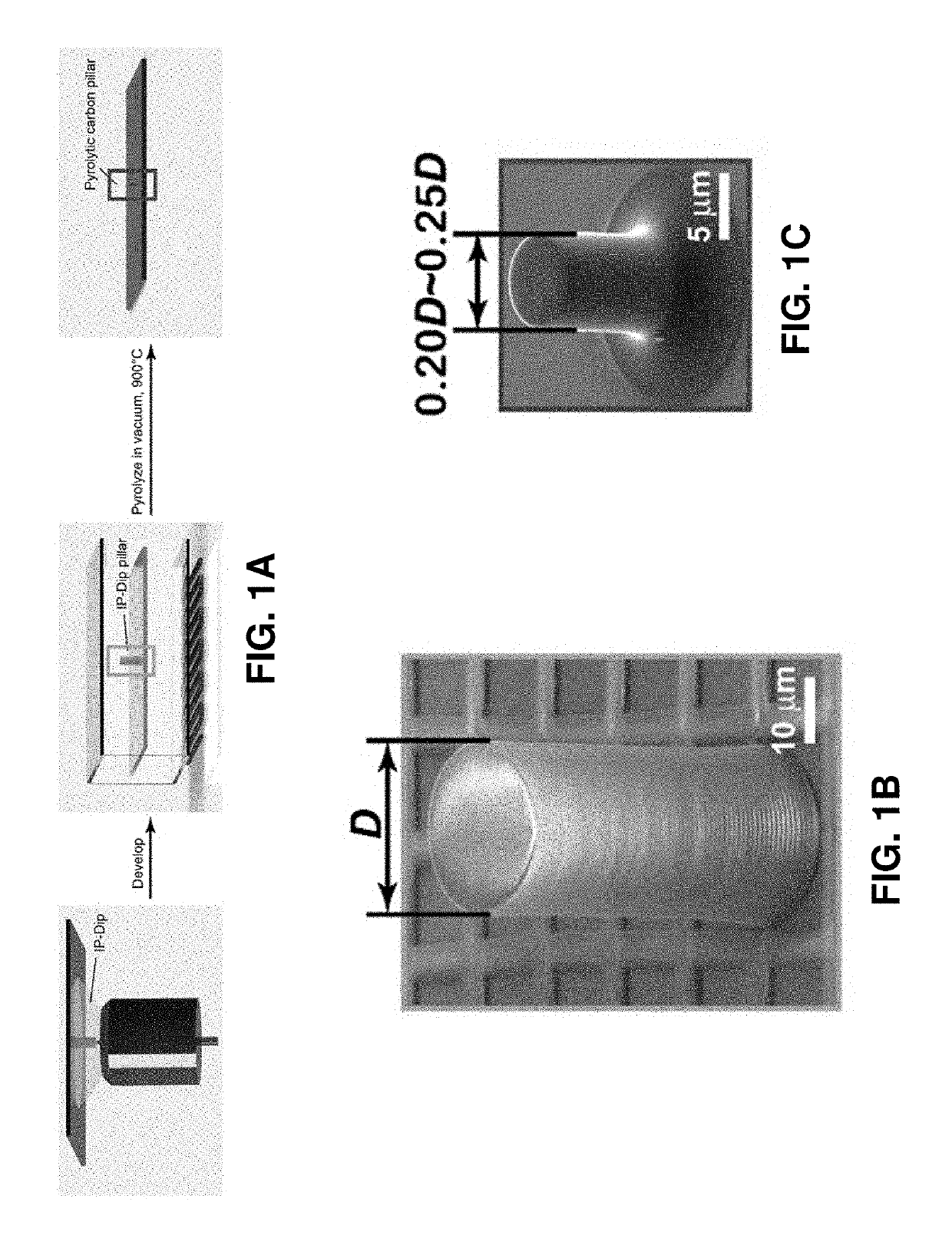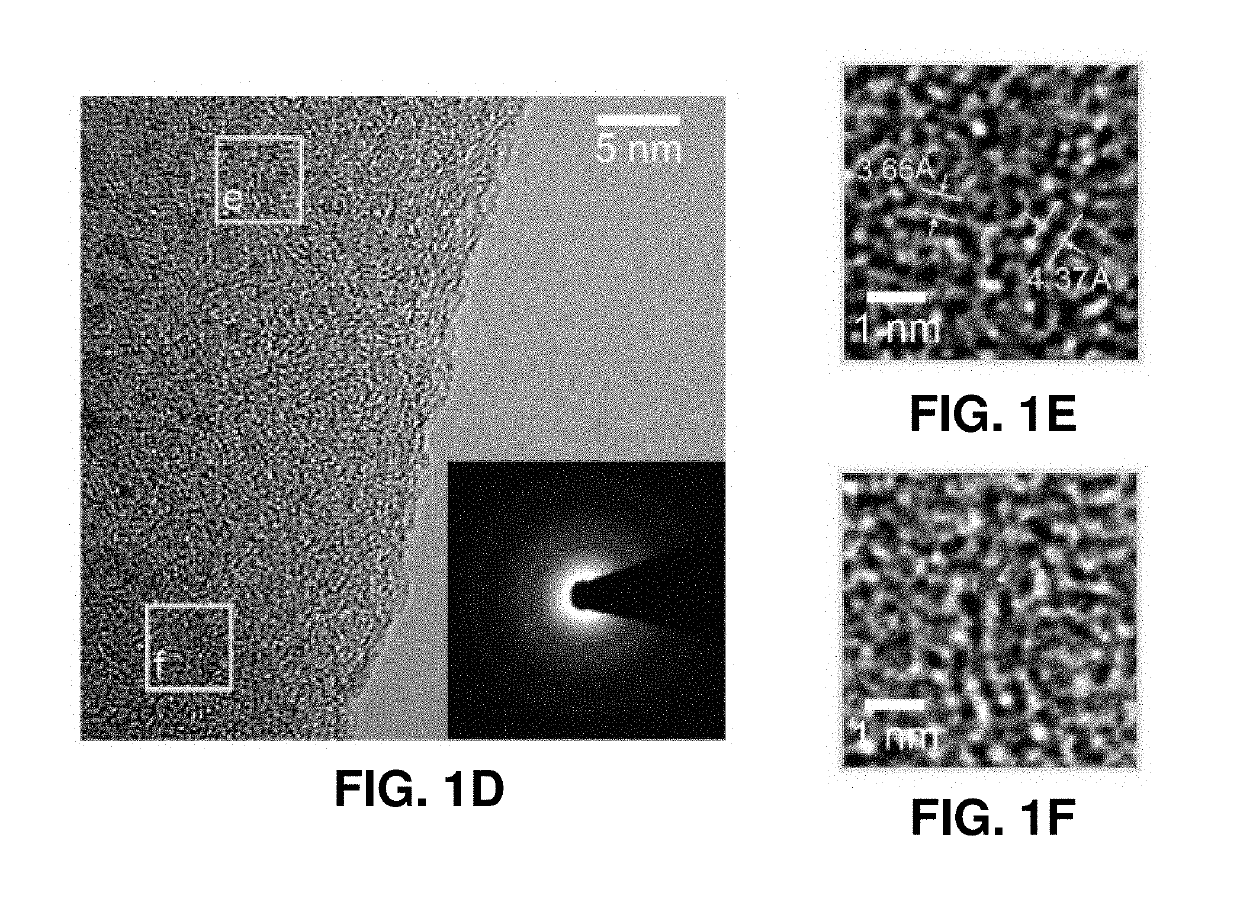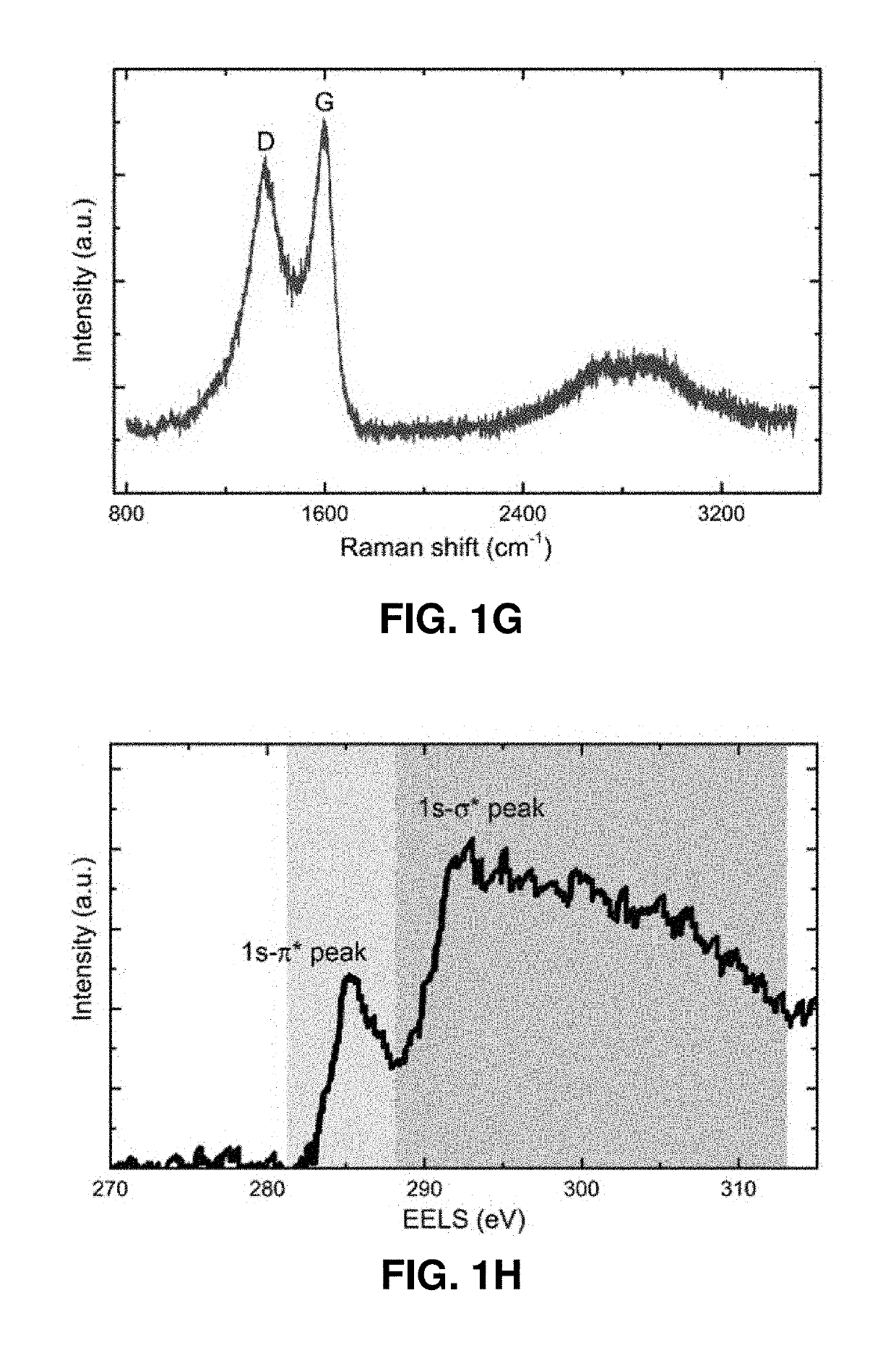Three-Dimensional Architected Pyrolyzed Electrodes for Use in Secondary Batteries and Methods of Making Three-Dimensional Architected Electrodes
a technology of pyrolysis electrodes and secondary batteries, which is applied in the direction of electrode manufacturing processes, cell components, electrochemical generators, etc., can solve the problems of severe reduction in stiffness and strength of conventional electrodes and methods, and limited kinetics and resultant power density. , to achieve the effect of high deformation/ductility, high strength and large elastic limi
- Summary
- Abstract
- Description
- Claims
- Application Information
AI Technical Summary
Benefits of technology
Problems solved by technology
Method used
Image
Examples
example 1
Design Through Atomic-Level Architecture
[0122]Overview: It has been a longstanding challenge to design and create materials with a combination of high strength, high deformability / ductility, large elastic limit and low density, as these properties may be mutually exclusive. Here, we have created pyrolytic carbon micropillars with a specific type of atomic-level architecture by controlling the precursor material and conditions of pyrolysis. Nanomechanical experiments demonstrated that the pyrolytic carbon micropillars exhibit a tensile strength of ˜2.5 GPa and a compressive strength approaching theoretical limit of ˜11.0 GPa, a substantial elastic limit of 20-30%, and a low density of 1.0-1.8 g / cm3, corresponding to a specific strength of 8.07 GPa / g cm3 which surpasses the property of all existing structural materials. Pyrolytic carbon micropillars with diameters below 2.3 μm exhibited a rubber-like behavior and sustained a large compressive strain of approximately 50% without catast...
example 2
ht, Flaw Tolerant and Strong Nano-Architected Carbon
[0196]Abstract: A long-standing challenge in modern materials design is to create low-density materials that are robust against defects and can withstand extreme thermomechanical environments because these properties typically are mutually exclusive: the lower the density, the weaker and more fragile the material. We developed a simple process to create nano-architected carbon that can attain a specific strength (strength-to-density ratio) of 1.90 GPa g−1 cm3, which represents greater than 1-3 orders of magnitude improvement over that of all nano- and micro-architected materials to date. We used two-photon lithography followed by pyrolysis in vacuum at 900° C. to fabricate two prototype topologies of pyrolytic carbon: octet- and iso-truss, with unit-cell dimensions of ˜2 μm, beam diameters between 261 nm and 679 nm, and densities of 0.24 to 1.0 g / cm3. Micromechanical experiments demonstrate a Young's modulus of 0.34-18.6 GPa, stren...
example 3
l Supplemental Materials for 3D Pyrolyzed Electrodes
[0257]In order to increase degree of graphitization by Ni catalyst, Ni(NO3)2 in ethanol was mixed with acryl-based photoresin. Pyrolysis process was same as previous one used for 3D architected carbon electrode (i.e. 1000 C). Referring to FIG. 19, Raman spectrum of the carbon pyrolyzed from Ni(NO3)2 contained photoresin showed sharp G peak and 2D peak, which demonstrate the presence of graphitic structure.
[0258]Referring to FIG. 20, XRD pattern of carbon pyrolyzed from Ni(NO3)2 contained photoresin showed sharp graphite peaks, which also support that the presence of graphitic structure. Peaks of Ni were also detected, which indicate this material was graphite-Ni composite. Photoresin-derived carbon (i.e. 3D architected carbon) showed broad patterns, which indicates amorphous carbon structure.
PUM
 Login to View More
Login to View More Abstract
Description
Claims
Application Information
 Login to View More
Login to View More - R&D
- Intellectual Property
- Life Sciences
- Materials
- Tech Scout
- Unparalleled Data Quality
- Higher Quality Content
- 60% Fewer Hallucinations
Browse by: Latest US Patents, China's latest patents, Technical Efficacy Thesaurus, Application Domain, Technology Topic, Popular Technical Reports.
© 2025 PatSnap. All rights reserved.Legal|Privacy policy|Modern Slavery Act Transparency Statement|Sitemap|About US| Contact US: help@patsnap.com



